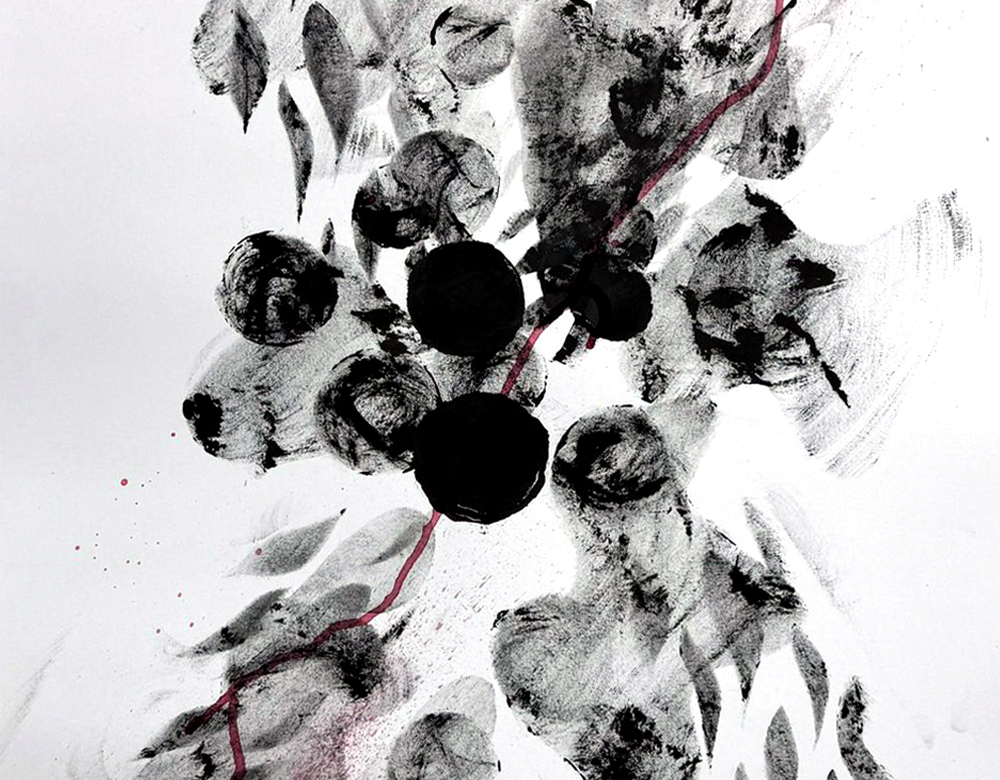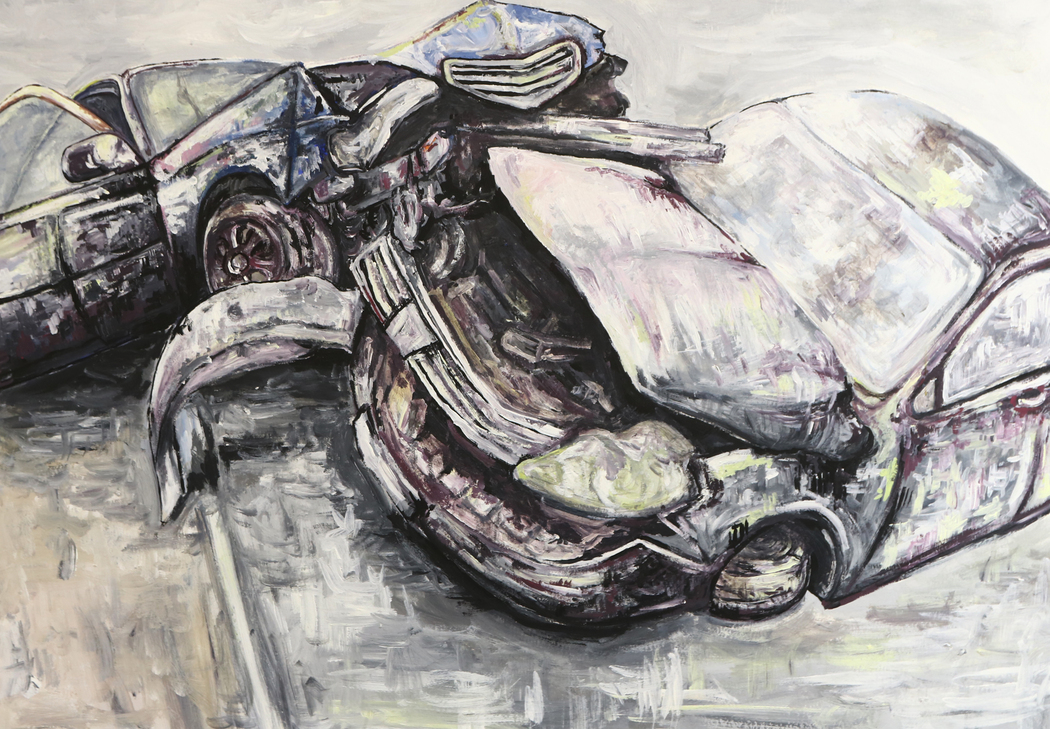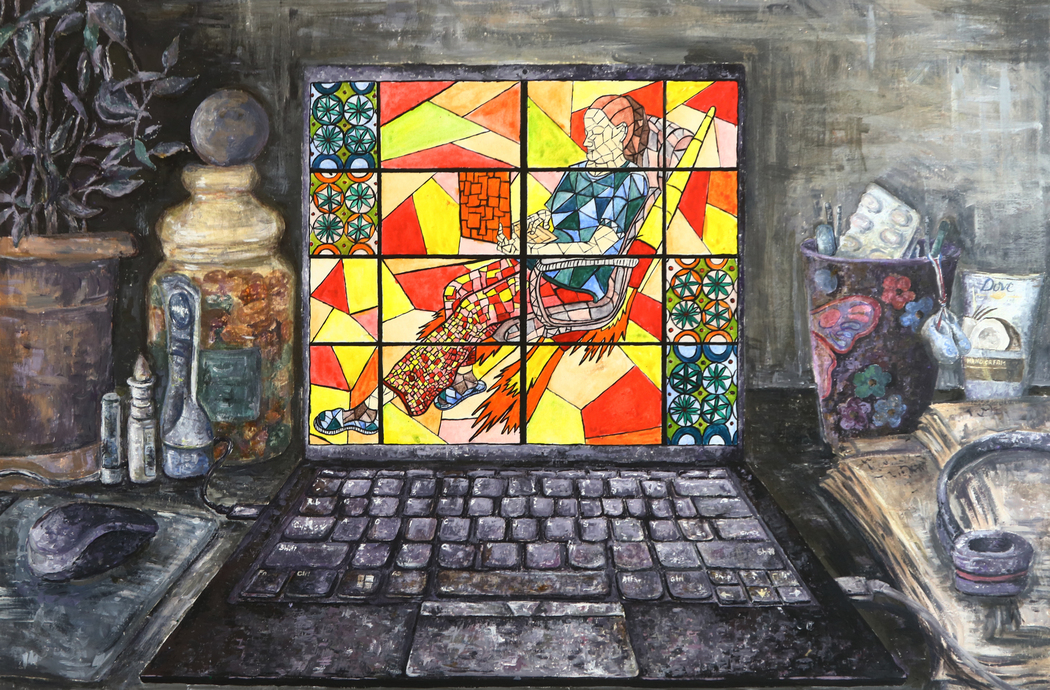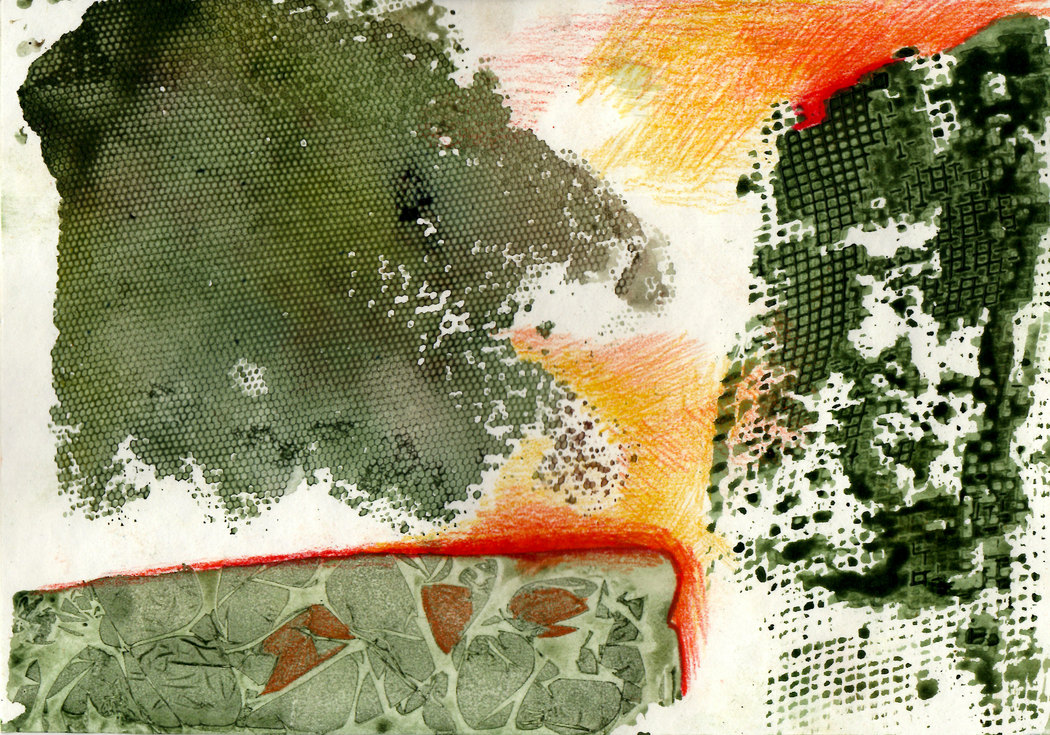Cristina Tonca
Year of birth: 2006
Where do you live: I was born in Bucharest, Romania, but now I live in Groningen, Netherlands.
Your education: I have been studying art since I was little; I attended The High School of Fine Arts Nicolae
Tonitza, (Sep 2020- Jun 2024); where I specialized in scenography. Now, I am a student at Minerva Art Academy; where I will be specializing in illustration and animation.
Describe your art in three words: colorful, playful and yet serious.
 Cristina Tonca | Nutshell | 2024
Cristina Tonca | Nutshell | 2024
How do you choose the themes for your watercolor works?
The themes for my watercolor works emerged naturally, as if they chose me rather than the other way around. I found myself experimenting with unconventional materials, bringing unexpected household items into my creative process. Bubble wrap, soap bubbles, scraps of table runners, and even salt became part of my toolkit, each adding its own unique texture and influence to the paintings.
What started as a playful exploration grew into an extensive series of experimental patterns, each piece revealing new possibilities and complexities. Through a process of trial and error, distinct themes began to evolve, one of the most captivating being the texture of snake skin.
Are there recurring symbols or motifs in your art? If so, what do they signify?
The fish has become the most significant and recurring motif in my artwork, appearing in nearly all of my long-term projects. Each time, it evolves, taking on various forms and stages of stylization, reflecting the shifting nature of my artistic journey.
My fascination with the fish motif began unexpectedly after reading an article about Paul Klee’s painting The Goldfish. In the article, the fish is described as “miraculous in itself, its size and its beauty. Everything is subordinate to it, everything else is present purely for its sake” (www.PaulKlee.net). The simple image of the goldfish unlocked something within me.
Since then, the fish has become a central symbol in many of my projects, representing various concepts and emotions—sometimes serenity, other times transformation or vulnerability. It has grown to represent not only my artistic vision but also my evolving understanding of beauty, symbolism, and the interplay between the natural and the abstract.
 Cristina Tonca | Crash | 2022
Cristina Tonca | Crash | 2022
Which artists or movements have influenced your style?
The works of artists like Paul Klee, MUTI, André Ducci, and Zaha Hadid evoke some of the most profound emotions in me. Each artist brings a unique blend of abstraction, color, form that challenges and expands my perception of the world. Their creations inspire me to craft my own artistic voice by drawing from their diverse styles and movements.
I also deeply admire the work of scenographer Helmut Stürmer, whose costumes and stage designs captivate my imagination. He has a remarkable ability to blend creativity with technical precision, transporting the audience into entirely new worlds. His designs, whether dystopian or surreal, create atmospheres that evoke powerful emotions and tell compelling stories. The way Stürmer balances tension and beauty in his work moves me profoundly, as his designs make the audience feel both the weight and the beauty of these imagined worlds.
For me, a great artist is someone who can provoke deep emotional responses through their work. Stürmer’s ability to merge artistic expression with storytelling, creating immersive environments, is truly inspiring. His ability to transport people to another world through his designs is what I strive to achieve in my own creative journey.
How does your cultural background shape your artistic vision?
I was introduced to the world of art at a very young age, and it has since become an integral part of my life. As a toddler, my grandmother took me to various exhibitions and introduced me to art books, which sparked a fascination that has only grown with time. These early experiences shaped my artistic vision, teaching me to appreciate the beauty in diverse forms and perspectives. I learned to see the world not just as it is, but as it could be, through the eyes of the artists who interpret it in unique ways.
As I grew older, I continued to nurture this passion by attending multiple art classes and ultimately enrolling in a fine arts high school. These formative experiences provided me with a solid foundation in various artistic techniques, allowing me to refine my skills and express my growing ideas across a variety of mediums. The ability to convey complex thoughts and emotions through art became my driving force, and it continues to inspire my work today.
However, I believe that true artistry extends far beyond technique alone. To grow as an artist, I feel it is essential to be well-versed in a wide range of subjects, including mathematics, politics, psychology, philosophy, literature, music and more. Each of these fields offers a unique lens through which I can broaden my understanding of the world and, in turn, enrich my art. For me, art is not just a creative endeavor; it is a means of exploring and engaging with the complexities of life.
So, I am constantly seeking knowledge in these diverse areas, as I believe that a well-rounded education is crucial to creating art that is not only technically proficient but also meaningful and impactful.
 Cristina Tonca | Desk Job | 2023
Cristina Tonca | Desk Job | 2023
Are you planning to explore new mediums or scales in future works?
During high school, I specialized in scenography, which provided me with a solid foundation in various artistic and technical skills. This experience not only sharpened my abilities but also sparked a broader range of creative interests, particularly in the world of model making. I was captivated by the intricate and hands-on nature of creating physical models, which eventually led me to explore the fascinating world of stop-motion animation.
With this newfound passion, I created my first stop-motion animation, “PEȘTELE DE LA CAP SEMPUTE.” This project marked the beginning of my journey into animation, and through it, I discovered a deep connection to the medium. Stop-motion animation is a perfect blend of the skills I developed in scenography—such as set design, sculpting, and painting—while also incorporating storytelling and editing techniques that allow me to bring my ideas to life in a unique and dynamic way. The ability to meticulously craft every frame and detail resonated with me on a personal level, and it quickly became clear that this was a medium I wanted to explore further.
As I continue to experiment with and refine my skills in animation, I feel an increasing desire to push the boundaries of what I can create. Looking to the future, I am excited about the possibility of conveying my stories through animations on a larger scale. I am particularly drawn to the idea of creating immersive worlds that invite audiences to experience a narrative in a more expansive and detailed way, blending art and storytelling in ways that are both visually captivating and emotionally resonant.
What message or emotion do you hope viewers take away from your art?
I believe that the purpose of art is to evoke emotion. While anyone can learn the technical skills required to draw, not everyone has the ability to stir the deep, raw emotions of their audience.
This is the greatest challenge and most rewarding aspect of being an artist. It’s not simply about creating something visually pleasing, but about crafting a piece that resonates with the viewer on an emotional level.
That’s why I leave a part of myself in every piece I create. Whether it’s a fleeting thought, a personal experience, or a feeling I’ve struggled to articulate, I make sure that these elements are embedded in my work. For me, this is the truest way to infuse emotion and meaning into my art, allowing it to transcend mere aesthetics and become something that speaks to the heart and mind. Art, at its core, is a powerful medium for connection—and I strive to make that connection as genuine and impactful as possible.
 Cristina Tonca | Snake Lake | 2024
Cristina Tonca | Snake Lake | 2024
Have you ever been surprised by how people interpreted your work differently than you intended?
Art is always open to interpretation, and one of the most intriguing aspects of creating is knowing that my work may be perceived in ways I never anticipated. Every individual brings their own unique background, experiences, and emotions into how they interact with art. This diversity in interpretation is, to me, one of the most fascinating qualities of artistic expression.
For example, when I look at my watercolor pieces, I see a landscape—perhaps a serene lake or a winding river—because the colors and fluid shapes remind me of specific moments in my life and memories I hold dear. These visual elements speak to me on a personal level, stirring up emotions tied to those experiences.
However, the beauty of art lies in its ability to transcend personal boundaries. For someone else, who has lived a completely different life, those same colors and forms might evoke something entirely different—perhaps a portrait of a loved one, an animal they once encountered, or even a dream that feels just beyond reach. The power of art is that it has the capacity to speak to people in ways that are personal, yet universal in their emotional resonance.

Leave a Reply
You must be logged in to post a comment.